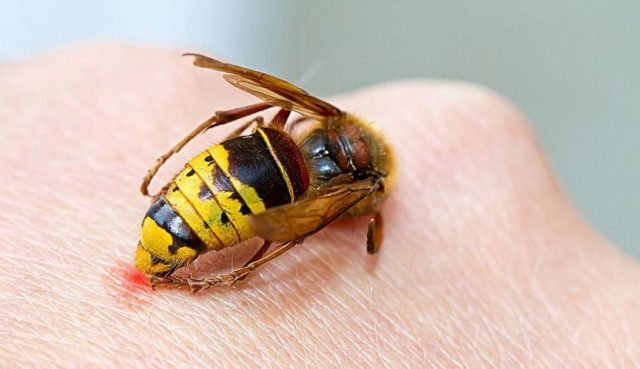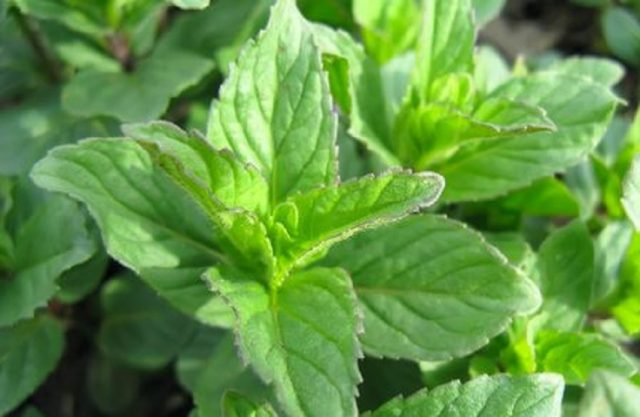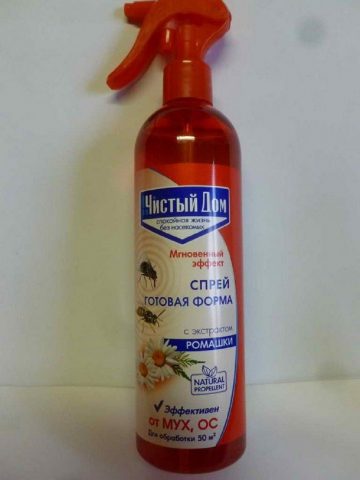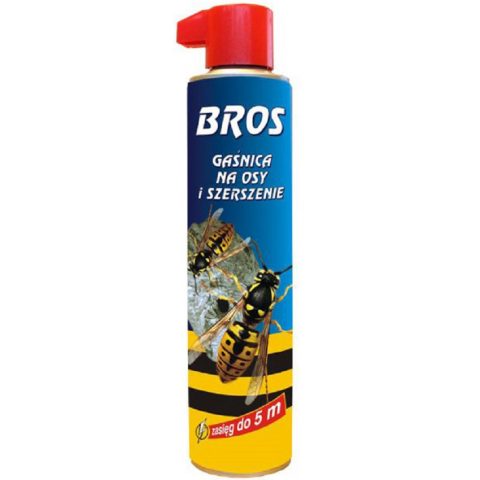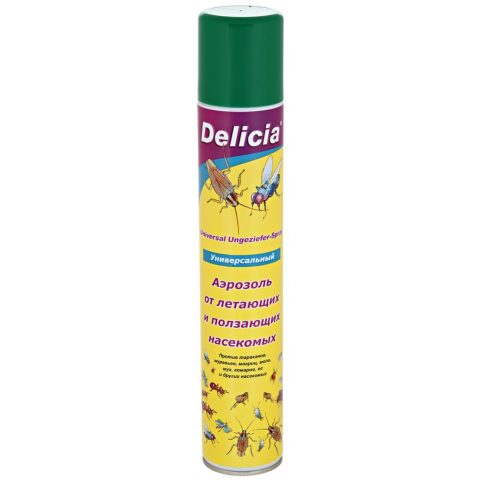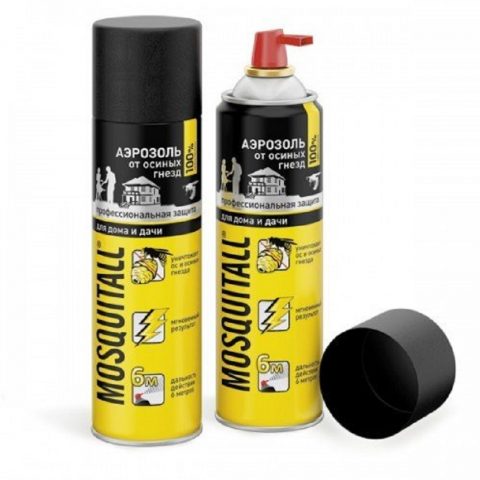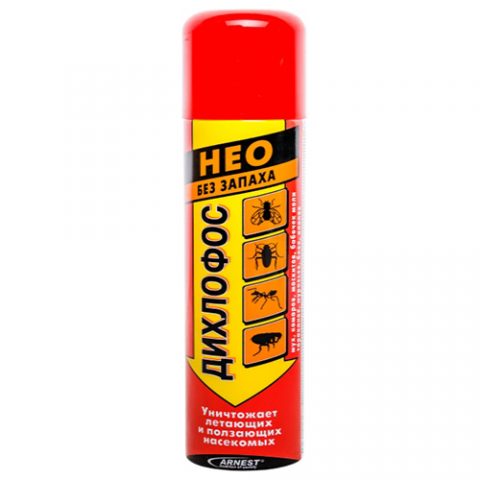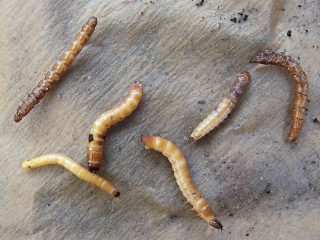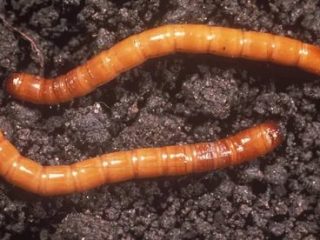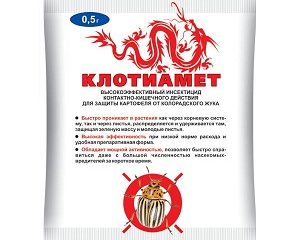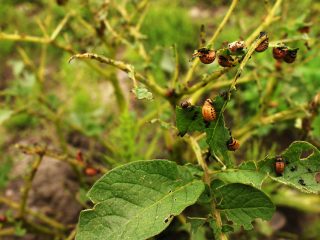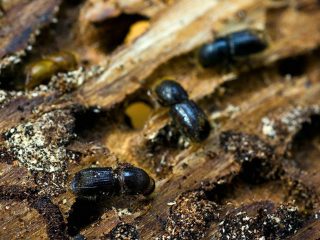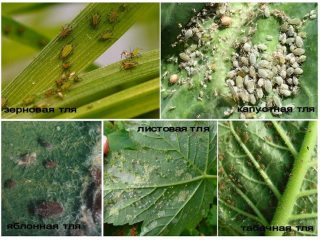Content
- 1 When bees and wasps become active
- 2 How to scare away bees from your site: methods
- 3 What smell are bees afraid of?
- 4 Sprays from wasps and bees
- 5 Wasp and bee repellent plants
- 6 Ultrasonic Bee Repeller
- 7 Folk remedies against wasps and bees
- 8 Bee Insecticide Traps
- 9 What scares away bees from humans
- 10 Conclusion
Many gardeners are looking for ways to scare away bees or wasps while working or relaxing on their site. Insects cause a lot of trouble, especially for people with allergic manifestations.
When bees and wasps become active
Observant gardeners distinguish a special period of the year in which insect activity increases. The end of summer is August. This is the time when:
- Insects have collected supplies for the family for the winter and are trying to cut them off from the encroachments of beekeepers. It is at this time that many hive owners disturb the bees by replacing the honey they have collected with sugar syrup.
- Wasps fly actively. The family that has grown over the summer becomes large enough, so a lot of food is required.
- The construction of nests is coming to an end, the reproduction of families begins.
There are other reasons for insect aggressive behavior throughout the year. These are unfavorable climatic factors or natural "malice" inherent in some breeds.
How to scare away bees from your site: methods
The list of funds is quite large, so choosing the right one is not difficult. It should be borne in mind that the options for dealing with wild or "domestic" insects are slightly different due to the increased aggression of the latter. You can scare off the bees from the site in one of the following ways:
- Construction of a solid fence. The border between the sites must be equipped with a solid fence with a height of at least 2.5 m. Insects will not rise higher and will stop flying into the adjacent area.
- Moving. This method involves changing the location of the bee hive away from living quarters. It cannot be considered very effective, because the radius of flight of bees is quite extensive.
- Fumigation (smoke). It is best to make a fire with spruce or pine wood. At the moment of burning, they emit substances, the smell of which the wasps cannot stand. The outdated method of room fumigation is currently not used due to its fire hazard.
- Scare away smells. Bees or wasps cannot tolerate certain odors that protect humans. These can be plants planted on the site, essential oils, household products with a pungent odor.
- Ultrasonic special devices-scarers. The sound of an electronic device is heard by wasps or bees, but the person does not react to it. For honey bees, it is better to use a device with an electromagnetic emitter. Its effect is milder, so such a bee repeller will not cause severe harm to insects.
- Chemicals. This method is tough and leads to the death of insects.
What smell are bees afraid of?
Insects don't like harsh scents. Among them - the smell of peppermint, lemon balm, wormwood, cloves, vinegar, citrus aroma.
The most unpleasant thing is foam smoke if set on fire. Insects try to fly away from the smoke of the burning foam. This smell is also unpleasant for people, so there can be no permanent protection. It is not recommended to burn pieces of foam on the site for a long time.
The danger to bees is posed by insecticides and poisonous substances. In addition to scaring away, these substances can destroy beneficial insects. Summer residents use drugs in the fight against wild bees.
Sprays from wasps and bees
Aerosol packs are convenient enough.With the help of a spray from bees, you can quickly treat the area, and the powerful filler neutralizes insects. The most effective are:
Spray Clean House
The action of the drug is based on the content of insecticidal components - cypermerine and tetramerine. They penetrate the covers of bees and wasps, disrupt the functioning of the nervous system, and cause paralysis. Works more efficiently indoors. Shake the can before use. Start spraying from the far side of the front door, gradually approaching the exit.
The cost of a 400 ml bottle from 276 rubles.
Spray Bros
Tool of Polish manufacturers.
The unique nozzle configuration is designed to spray the drug from a distance of 5 m. Highly toxic for wasps, but safe for humans. It is imperative to shake the bottle. It is recommended to use it while the wasps are inside the nest - after sunset or before sunrise. The drug must be sprayed strictly in the direction of the wasp nest, holding it in a vertical direction. Re-spraying is allowed after a week. The volume is 250 ml, the price is 165 rubles.
Delicia spray
The drug is made in Germany. The composition contains repellents and insecticides that ensure effective and rapid destruction of wasps or wild bees. The protective effect lasts for 5 weeks. After shaking the container, it is necessary to direct a stream of substance to the places where wasps accumulate, then leave the territory for 15 minutes. The product does not stain fabrics and paper. It is important not to spray near open flames or heating devices, keep in a dark room. Contact with humans and animals is inadmissible. Volume 400 ml, cost 250 rubles.
Mosquitall
Benefits - Combination of two pesticides bioallertin and cypermethrin. Requires the use of personal protective equipment, especially the respiratory tract. Spraying should be done from a distance of 6 m. The cost is 390 rubles.
Dichlorvos
Dichlorvos is used from bees and wasps in the form of a spray, after shaking the can. It is difficult to achieve a high-quality effect outdoors. Therefore, you need to put a plastic bag on the nest, then make a hole in it and spray the substance there. The paralytic effect lasts 2 hours. The volume is 190 ml, the cost is 87 rubles.
Some gardeners prefer to use karbofos from bees - a structural analogue of Dichlorvos. But its pungent smell does not allow the use of the substance indoors. The price of an analogue is not more than 230 rubles. The action is almost instantaneous.
Wasp and bee repellent plants
An environmentally friendly and gentle control method. Based on the repelling effect of herbal odors, which insects do not like. They have a good sense of smell. An unusual or pungent odor causes insects to avoid such places.
- Mint. Contains a large amount of menthol, the smell of which bees and wasps cannot stand. Therefore, they fly around an area with a mint side.
- Melissa. For insects, the smell of a plant is very harsh. The only condition is that lemon balm does not tolerate shady areas, therefore it will only protect sunny places.
- Lavender. Lavender has a pleasant, but very persistent scent. It is the concentration of essential oil components that makes insects fly away.
- Sagebrush. It drives away not only wasps and bees, but also many other pests. Persistent odor negatively affects the insect organism.
- Basil. Spices are disliked by bees for their pungent aroma, causing rejection.
- Geranium. The specific persistent aroma scares off wasps.
Ultrasonic Bee Repeller
Bees and wasps are very sensitive to ultrasonic waves. Therefore, gardeners and beekeepers use this category of repellents, especially against wild bees. According to summer residents, an ultrasonic bee repeller is more effective indoors. For open space, rather powerful devices are required.
- Portable model, battery operated, has a mode switch on the case. Equipped with a metal clip for attaching to the belt and a cord to hold it on the neck. Convenient to use outdoors and indoors. The cost is from 960 rubles.
- Weitech WK-0432. It is an imitation of a wasp nest. Insects are afraid to fly up close so as not to fall under the aggression of their own kind. The radius of action is 5 m, non-toxic, the price is 990 rubles.
- OK-4. Made in the form of a keychain. Such a wasp and bee repeller is convenient for constant carrying with you in nature. In addition to bees and wasps, mosquitoes and mosquitoes avoid it. The cost is 600 rubles.
- X-BIRD. Powerful stationary repeller. It works not only against insects, but also against rodents. Designed for indoor and outdoor use. Has from 5 to 7 modes depending on the model. The radius of action is impressive - up to 700 sq. m. The cost is appropriate - 6990 rubles.
- A repeller of universal action, harmless to humans and electronics. It is allowed to use in institutions, apartments up to 200 sq. m. The cost is 390 rubles.
Folk remedies against wasps and bees
Traps are considered the most common methods of dealing with bees or wasps. They are made from plastic bottles or glass containers. Be sure to pour water and add a component that attracts insects - sugar, meat or fish (for wasps). It is important that the trapped individuals cannot get out. Then they should be destroyed. This option will not get rid of insects completely. Therefore, gardeners try to get rid of the nest with water or a plastic bag. In this case, the actions must be carried out when the inhabitants of the nest have finished flying around the territory.
Another way is to place laundry soap or hot pepper pods near the nest.
Bee Insecticide Traps
Traps can be "stuffed" not only with edible baits, but also with poisonous substances for bees and wasps. Boric acid is popular as a bait. It cannot scare away wasps and bees due to its lack of smell, therefore it is an effective bait.
You can also add insecticides to the traps:
- Avant, KS. A drug that is toxic to the queen bee. She dies when insects bring him on their paws.
- Get. It is used to combat wasps.
- Medilis-Ziper. An emulsion that dissolves easily with water. Can be poured into traps or treated with insects.
In addition, gardeners use any available insecticides or buy ready-made Velcro with glue.
What scares away bees from humans
There are odors that irritate or attract bees, and some are deterrent. It has been noticed that bees do not like the smell of alcohol and tobacco. Therefore, it is highly undesirable to be near the hive at the time of intoxication or smoking. Insects also react negatively to the smell of human sweat. After strenuous work, you should shower and change.
Essential oils, repellents, creams or ointments with a corresponding smell, for example, essential oils of peppermint, cloves, catnip, citronella, and lemon eucalyptus, will help scare away bees from humans.
Gels and ointments:
- "Apistop", which contains essential oils and pheromones of bees.
- "Mellan", containing an analogue of royal jelly.
- Children's spray "Johnson'sBaby".
In the nearest pharmacy, you can buy a suitable product, pharmacology is constantly proposing new developments.
Conclusion
There are various ways to scare away bees. But it is better to take measures so as not to attract insects to your site.
